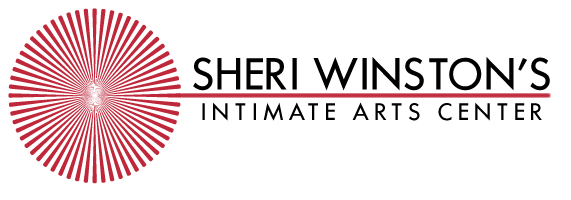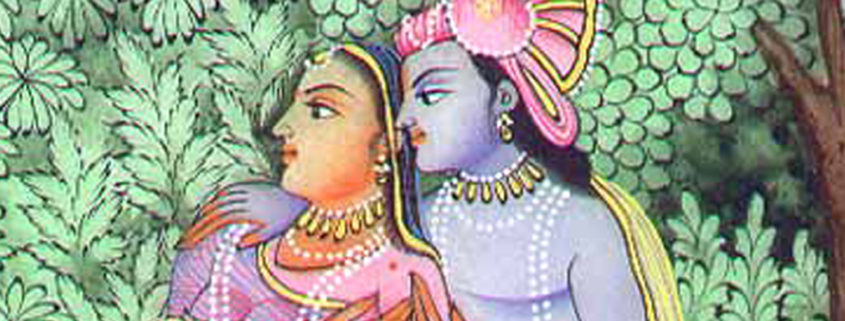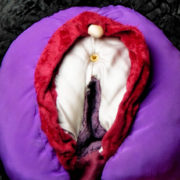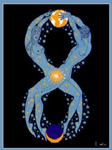Connection: The Prime Directive of Sex
The following is a collection of excerpts from Succulent SexCraft: Your Hands-On Guide to Erotic Play and Practice.
The Prime Directive: Sex Is About Connection
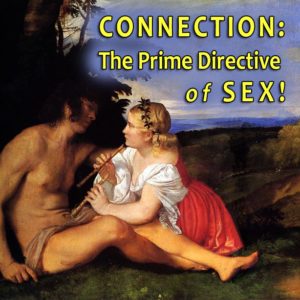 At root, sex isn’t about what you do erotically with another person. It’s not about getting off or getting it on, scoring or hooking up. It’s about connecting, first with yourself, possibly with others and ultimately with life.
At root, sex isn’t about what you do erotically with another person. It’s not about getting off or getting it on, scoring or hooking up. It’s about connecting, first with yourself, possibly with others and ultimately with life.
Your sexuality is first and foremost about your connection to yourself, your whole self.
More than anything, your sexuality is about your relationship with yourself. By ‘self’ I mean all of you: your body, mind, heart and spirit; your past, present and future; your genetics and your environment—everything that makes you uniquely and completely you.
Your sexuality is about who you are, not about who you do (or don’t) have sex with. Your sexual activities don’t define your sexual identity—they emanate from and are expressions of it. Your sexuality is an inherent, inseparable and essential aspect of the complex person that is you.
You can break up with other people. They can die or go away. You can’t leave or be left by yourself, though. Wherever you go, there you are. You are your primary partner, the only one who has been and always will be with you.
What this means is that if you want to have better sex, start with yourself. If you want to have better relationships with other people, start with yourself. If you want more love, connection and pleasure in your life, the place to start is, you guessed it, with yourself.
There’s a straightforward reason for this: Your foundational relationship to yourself is the basis of all your other relationships (not just the sexual ones). All your other connections are shaped by your relationship with yourself.
Your Sexuality Is About Your Connection to Others
Naturally that includes the people you have sex with—partner sex is fundamentally about connection. And it’s also about your connection to everyone and everything, including all life on this planet.
Because your sexuality is an integral aspect of who you are, Eros shows up in all your interactions and relationships, including the many that aren’t sexual. All your other relationships are influenced by your core connection with yourself, just as you have been shaped by all that surrounds you. You’re at the center of a great web of connection. This includes your relationships with partners, families, communities, culture and ultimately the whole wide world. Whatever you do, however you’re connected, your sexuality is part of it.
Sex is Both Natural and Learned
The story that ‘sex comes naturally’ is only partly true. While much of our sexuality is derived from our natural animal templates, an astounding amount of human sexuality is learned. You learn sex, including not just what goes where, but more significantly, your erotic capacities, responses and pathways to pleasure. You are an intricately interwoven combination of hardware and software.
Your hardware is your genetics, the factory-installed equipment that is the unique result of millions of years of evolution. It’s your inborn instincts and aptitudes. You can’t change your hardware, but you can learn to understand and work with it. And learn how to make it work for you.
Unlike your hardware, your software is the programmable, learned part of who you are. You’ve been absorbing things like a sponge your whole life, starting with your prenatal environment and continuing through your birth journey up to this very day. You’ve been shaped by your experience and environment.
Much of our sexuality comes from the software side of the divide. You learned to view sex as sinful, sacred or something in between. You learned your concept of foreplay, your beliefs about who is and isn’t appropriate to have sex with, and much more. Some of this education has been conscious. Much has been unconscious.
Your ability to learn is innate, while what and how much you learn depends on your social and cultural circumstances. For instance, you were born with the inherent ability to learn language, but your proficiency with your native tongue or how many languages you speak depends on your environment. Another example: Every baby loves music and responds to rhythm—but whether or not you play an instrument depends on what you learned to do with your intrinsic musical aptitude. Essentially, you learn sex the same way you learn to play a musical instrument, dance or become fluent with a foreign language.
We all come equipped with a starter kit of basic capacities such as an inherent sense of rhythm, a body that loves to move, and a brain primed with the ability to learn words and grammar. Our natural aptitudes provide the foundation for learning essential skills. We then build up our skill sets by layering on increasingly complex competencies. While much of our learning is unconscious, it’s through conscious learning that we achieve proficiency and ultimately mastery.
You Need Accurate Maps
To fulfill your sexual potential, it helps to have structure, support and guidance–and, more specifically, accurate and effective maps and models. Anything short of that is like trying to find a special spot in the woods without a map (or with one that’s just plain wrong).
It’s not easy to learn complex skills on your own—it helps to have a guide. A teacher can share their knowledge base of accumulated information, wisdom and techniques, offer logical sequences for learning, organize information, provide structure and clarify confusion. A mentor can encourage you on your journey, and also share useful, accurate maps that show you the easy routes and warn you against pitfalls.
Good guides are especially necessary when the maps you’ve been using are inaccurate or outdated. Bad maps get you lost! Unfortunately, this is what we get from our mainstream culture, which seems to specialize in offering flawed maps about relationships and sexuality.
To make matters worse, many people don’t realize they’ve been working with faulty maps and instead believe there’s something wrong with them. Bad maps about sex, bodies, desire and relationships often leave people feeling broken or like failures.
For all their value, though, it’s essential to remember that the map is not the territory. It’s a representation of reality, not the actual thing. That’s why you can have many maps of the same thing, with each one emphasizing a different perspective. A street map, a population map and a topographical one can be simultaneously true yet all look different and be useful in different ways. That doesn’t make one right and the other wrong—they just offer multiple lenses so you can get a bigger and more multifaceted picture.
The important thing to ask about a map or model is if it’s useful and true. Does it confirm or invalidate your experience? Does it get you lost or help you get where you want to go? If you want to find a special swimming hole you’ve heard about, you’re much likelier to get there if you’ve got an accurate trail map that has a big ‘X’ marking the sweet spot.
Of course, you’ll only know if it’s correct if you actually take that walk in the woods and find out for yourself if that idyllic place exists.
Maps are a supremely useful tool for getting where you want to go. Without them, you’re just fumbling in the dark.
